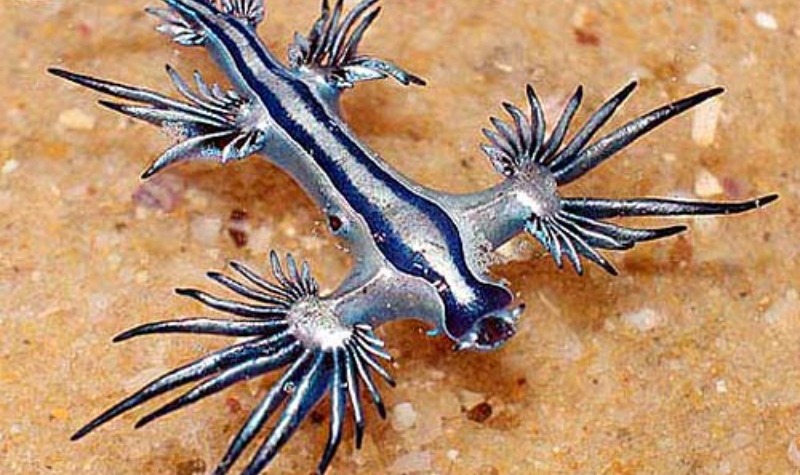The Astonishing Comeback: The Blue Dragon Reclaims the Spanish Coastline After a Century
Prepare to be amazed as the mythical-sounding Glaucus atlanticus, commonly known as the blue dragon, makes a triumphant return to the Spanish coastline after a whopping 100 years. These peculiar creatures were last spotted back in 1925 in the Balearic Islands and even as far back as 1705 in Ibiza, according to the adventurous botanist Johann Philipp Breyne.
The enigmatic blue dragon, a shell-less gastropod, boasts an exceptional defense mechanism against its predators. While other critters may resort to generating tiny spiky structures made of calcium carbonate or secreting repellent substances, our blue friend takes a different approach entirely.
'Its defense system is a true work of art,' explains Professor Luis Sánchez Tocino, the esteemed zoology expert from the University of Granada. 'These extraordinary beings store the stinging cells of their prey in their own digestive system. When the need arises, they unleash these prickly weapons, defending themselves with a sting.'
The blue dragon's eclectic menu includes delicacies such as the Portuguese man-of-war (Physalia physalis), the vibrant blue button jellyfish (Porpita porpita), and the elegant sea sail (Velella velella). By indulging in these exquisite offerings, our slim and sleek hero sustains its compact size of 20 to 30mm and blends seamlessly into its surroundings.
'An aerial deception, my dear friends,' Professor Sánchez elaborates with a twinkle in his eye. 'From above, the blue hue of the dragon cunningly blends with the vastness of the sea. And from below, it takes on a shimmering silver shade, cleverly camouflaged amidst the sun's rays.'
Should you stumble upon these bewitching creatures during your coastal adventures, exercise caution and grant them their much-deserved space. Fear not, for the blue dragon's diminutive stature poses no harm to us humans. However, if you possess sensitive skin or suffer from allergies, it might be wise to approach with care.
While some experts argue that the reappearance of the blue dragon may be attributed to climate change and rising sea temperatures, our sagacious marine zoology expert disagrees. 'It was already spotted in the Balearic Islands in 1914, so I believe other factors are at play,' he quips. Instead, he suggests that the mighty sea currents have played a part in bringing these enchanting creatures back to our shores. 'Remember when we were graced by a multitude of Portuguese caravels? It is highly likely that they were accompanied by these mesmerizing blue dragons.'
So, dear adventurers, keep your eyes peeled and your sense of wonder ignited as the blue dragon dances its way back into our hearts and the vibrant Spanish coastline. Witnessing their triumphant return is a testament to the incredible marvels that nature has to offer.

